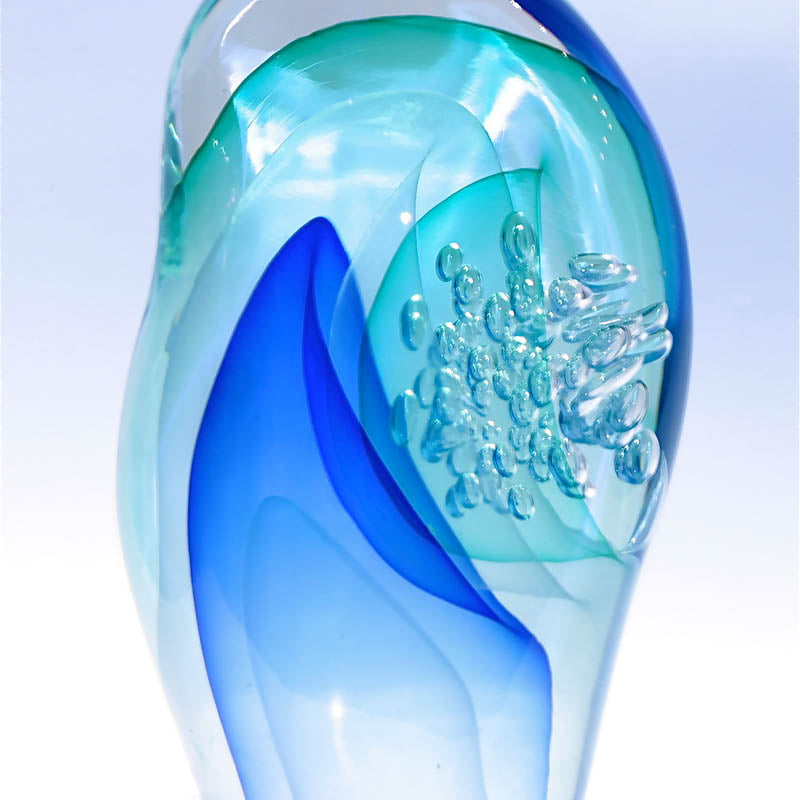This is a glass that imitates the effect caused by long periods spent underground, typical of glass objects found during archaeological diggings: ancient glass acquires a dusty patina from minerals trickling through groundwater and etching the surface.
During manufacture, a mixture of several powders - mainly carbonates, nitrates, and silica - is dispersed on the surface of the object at a temperature of about 800 Celsius degrees. This mixture adheres irreversibly and gives the special effect of opaqueness and colouring. To improve adhesion the piece is heated again to make the patina permanent..
The powder mixture contains melting components (carbonates or nitrates) that decompose under heat and act as binders, inert opaquers (talcum, silica, etc.) and sometimes as colouring agents. This technique was introduced in the early 50s by Alfredo Barbini and by Cenedese who were able to use its best effect, applying it in vases and sculptures modeled along archaic lines.
Later it gained a remarkable success and was extensively taken up by the Seguso Vetri d'Arte firm during the 70s and in a series of items designed by Giovanni Patrini. More recently the technique has been used by Bisazza.




Leave a comment
All comments are moderated before being published.
This site is protected by hCaptcha and the hCaptcha Privacy Policy and Terms of Service apply.